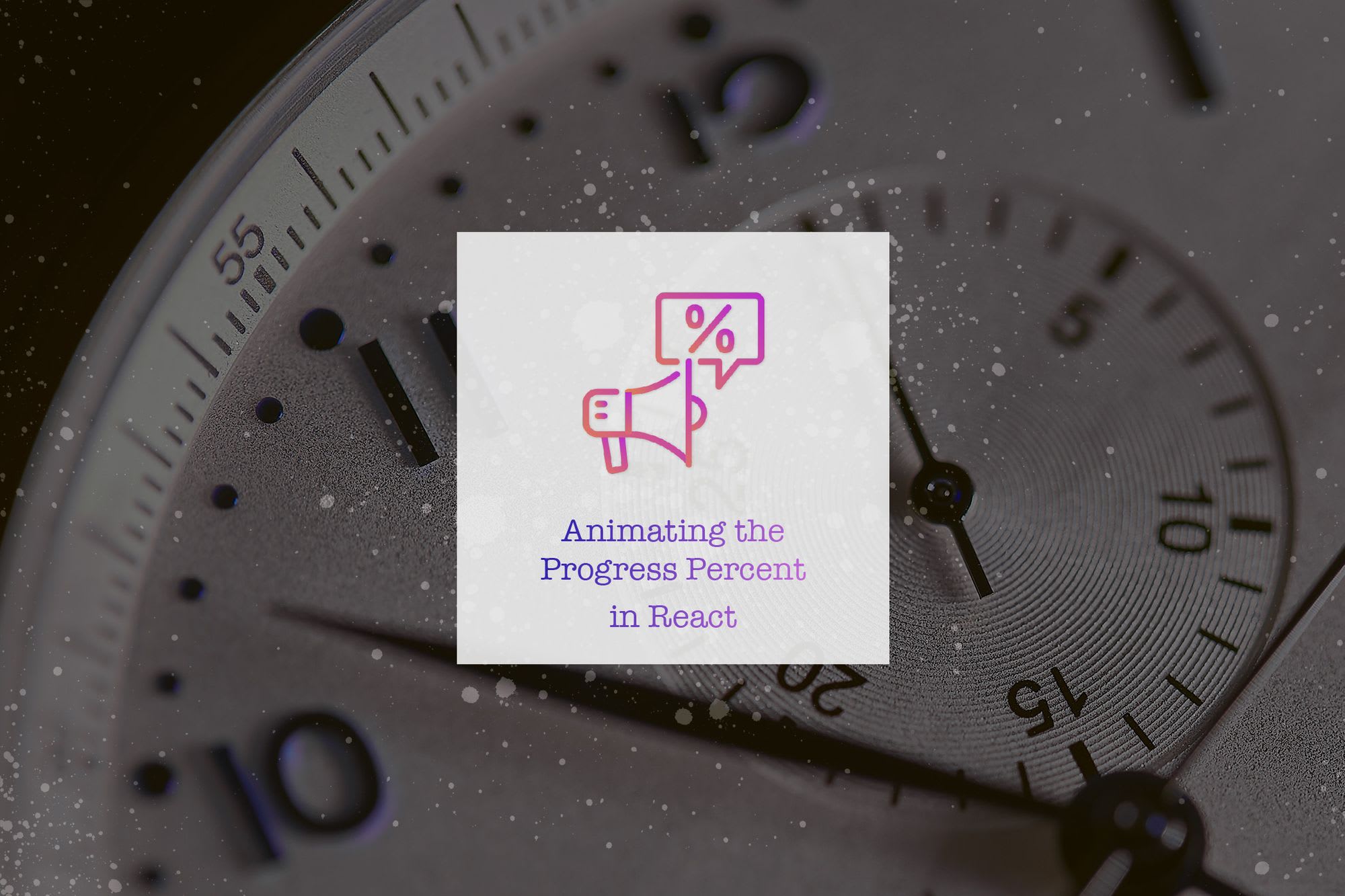Animating the Progress Percent Change in React
Visual Feedback is very important in UI design in keeping user informed & engaged with their action. Animated Changing values of percentage is of those ways

Visual Feedback is very important in UI design. It keeps the user informed and engaged with their action.
One of those visual feedbacks is showing Progress related to the action via Percent. There are two ways to show this feedback
- Progress Bar
- Text % updating
The Progress Bars are easy as there is an HTML element for that. Here is an example of Progress Bars:
<progress id="file" max="100" value="70">70%</progress>
And text % is a span ?
<span>70%</span>
In the case of text representation, there is no visible change or transition from the old value to the new value.
Here we will take a look at animating the change in number in the React Component
For let’s see a basic component to see a progress in basic text:
export default ({ value = 0, symbol = '%' }) => (
<span>{value}{symbol}</span>
)
Now, to animate and visualize a change in values, we need an intermediate value.
Let’s add a used state function
export default ({ value = 0, symbol = '%' }) => {
const [display, setDisplay] = useState(value)
return <span>{display}{symbol}</span>
}
Now we need to make the intermediate values increase but slow enough to make the changes visible.
We will achieve this by setInterval and incrementing the intermediate value by 1. We are using 1 because we are trying to show the percent increase by step one. You can choose to have other values for the steps and make the necessary changes.
export default ({ value = 0, symbol = '%' }) => {
const [display, setDisplay] = useState(value)
setInterval(() => {
setDisplay(val => val < value ? val+1 : val)
}, 50)
return <span>{display}{symbol}</span>
}
This will keep running the interval till infinity; so we need to stop it when we don’t need it.
We need to keep the reference of the interval and clear it later. We will store its reference with the hook useRef
export default ({ value = 0, symbol = '%' }) => {
const interval = useRef(null)
const [display, setDisplay] = useState(0)
interval.current = setInterval(() => {
setDisplay(val => {
if (val >= value) {
clearInterval(interval.current)
return value;
}
return val + 1
})
}, 100)
return <span>{display}{symbol}</span>
}
And Voila, our percent text is animating for initial value to the provided value.
However, the above component will not render any change to the value prop as we are not using it in any of the Markup.
If we do <span>{display}{symbol} - {value}</span> it we re-render on any change in the prop value. It will do so because the virtual DOM will generate a different DOM tree on each value change.
So if we don’t want to use value in the DOM tree and still want to react to the changes in value; we need to use useEffect hook.
There are changes in the components with useEffect on value change:
export default ({ value = 0, symbol = '%' }) => {
const interval = useRef(null)
const [display, setDisplay] = useState(0)
useEffect(() => {
interval.current = setInterval(() => {
setDisplay(val => {
if (val >= value) {
clearInterval(interval.current)
return value;
}
return val + 1
})
}, 50)
}, [value])
return <span>{display}{symbol}</span>
}
Now, we have another problem; every change to the value our animation starts from 0
We want it to start from the old value and reach the new value.
If it were classical components of old times? we could have used componentWillReceiveProps().
But it's not.
So here we will use useRef to keep the intermediate values in the component lifecycle. Remember, it is different from useState
Let’s add a ref to store the intermediate values and use the the value from ref to animate:
export default ({ value = 0, symbol = '%' }) => {
// initialization of ref with value only happens first time
const oldValue = useRef(value);
const interval = useRef(null);
const [display, setDisplay] = useState(oldValue.current);
useEffect(() => {
interval.current && clearInterval(interval.current);
interval.current = setInterval(() => {
setDisplay((val) => {
console.log(val);
if (val >= value) {
oldValue.current = value;
clearInterval(interval.current);
return val;
}
return val + 1;
});
}, 50);
return () => clearInterval(interval.current);
}, [value]);
return <span>{display}{symbol}</span>
}
And now our progress percent animation is complete. This is what it looks like:
Conclusion
Visual Feedback of any action makes the UI more intuitive and humane.
The Changing values of percentage in progress-of-action is a small addition to the code.
Although it is a big aid for the User to know that something is happening and what is its status.
Did you make any such visual feedback changes that made UX more intuitive?
Let me know through comments. or on Twitter at @heypankaj_ and @time2hack
If you find this article helpful, please share it with others.
Subscribe to the blog to receive new posts right to your inbox.
Credits
- Icon from IconFinder
- Photo by Agê Barros on Unsplash

